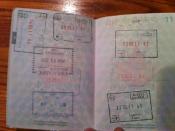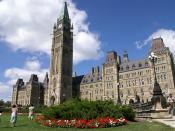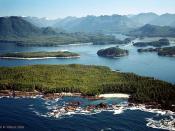took a while to write (it's over 4000 words) needs a bit more analysis
In a country as vast and as culturally diverse as Canada, many different political opinions can be found stretched across the country. From the affluent neighbourhoods of West Vancouver to the small fishing towns located on the east coast of Newfoundland, political opinions and affiliations range from the left wing to the right wing. To represent these varying political views, Canada has four official national political parties to choose from: the Liberals (who are currently in power), the Progressive Conservatives, the New Democrats, and the Reform Party. What is particularly interesting is that none of the latter three parties compose Her Majesty's Official Opposition in the House of Commons. The Bloc Quebecois, a Quebec separatist party who only ran candidates in the province of Quebec in the last federal election in 1993, won 54 seats in that province, and claimed the title of Her Majesty's Loyal Opposition over the Reform Party, who garnered only 52 seats.
Because the Bloc ran candidates only in Quebec, it would be difficult to think of them being a national political party, even though they hold a significant number of seats in the national legislature. This paper will examine the significant early history of Canada's four main national political parties, and then will analyse their current state, referring to recent major political victories/disasters, and the comparison of major economic policy standpoints, which will ultimately lead to a prediction of which party will win the next federal election in Canada.
Starting on the far left, there is the New Democratic Party of Canada. Today's modern New Democratic Party was originally called the Co-operative Commonwealth Federation (CCF), and was founded in 1932. Originally led by a man by the name of James...


